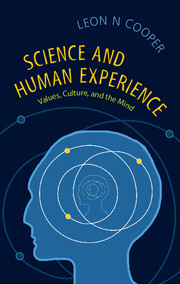Book contents
- Frontmatter
- Dedication
- Contents
- Preface
- Acknowledgement
- Part One Science and Society
- Part Two Thought and Consciousness
- Part Three On the Nature and Limits of Science
- 19 What Is a Good Theory?
- 20 Shall We Deconstruct Science?
- 21 Visible and Invisible in Physical Theory
- 22 Experience and Order
- 23 The Language of Physics: On the Role of Mathematics in Science
- 24 The Structure of Space
- 25 Superconductivity and Other Insoluble Problems
- References
24 - The Structure of Space
from Part Three - On the Nature and Limits of Science
Published online by Cambridge University Press: 05 November 2014
- Frontmatter
- Dedication
- Contents
- Preface
- Acknowledgement
- Part One Science and Society
- Part Two Thought and Consciousness
- Part Three On the Nature and Limits of Science
- 19 What Is a Good Theory?
- 20 Shall We Deconstruct Science?
- 21 Visible and Invisible in Physical Theory
- 22 Experience and Order
- 23 The Language of Physics: On the Role of Mathematics in Science
- 24 The Structure of Space
- 25 Superconductivity and Other Insoluble Problems
- References
Summary
Euclid's Elements provides one of the earliest and best examples of a system in which complex relationships follow from a small set of very simple assumptions. But is space Euclidian? Is it curved? Does light travel in straight lines? What do such questions mean?
This essay is based on a chapter originally published in An Introduction to the Structure and Meaning of Physics in 1968.
Euclid's Elements
Geometry, like Latin, with generations of repetition has become synonymous with the trials of adolescence and evidence of the inhumanity of adults to their young. Much has passed since Plato had inscribed over the doors of his Academy, “Let no man ignorant of geometry enter here”, or since Edna St. Vincent Millay wrote, “Euclid alone has looked on beauty bare.” What there is in the Elements of Euclid that made them the model for the science of Galileo and Newton, and for the philosophy of Descartes. Why they provide a gem-like example of a mathematical system and of a physical theory remains a mystery to numberless students for whom Euclid evokes only a memory of pain.
In a world beset by uncertainty, the demonstrations of geometry at one time seemed a model for what a sure argument should be. A dispute in the marketplace begins obscurely, and ends in turmoil. In political arguments opinion sways first to one side and then to the other, fluttering like a butterfly, finding no place secure enough to rest.
- Type
- Chapter
- Information
- Science and Human ExperienceValues, Culture, and the Mind, pp. 198 - 217Publisher: Cambridge University PressPrint publication year: 2014



